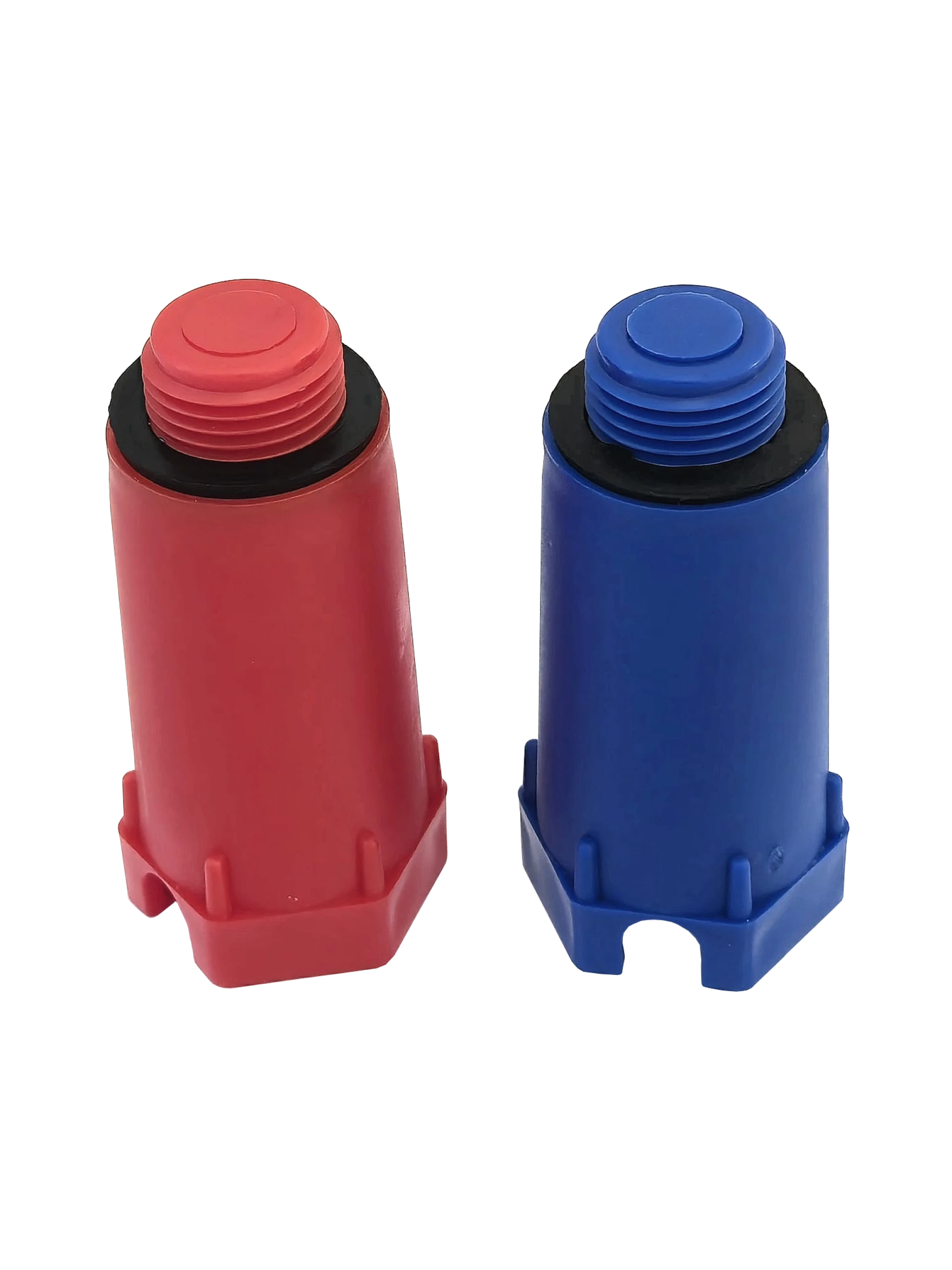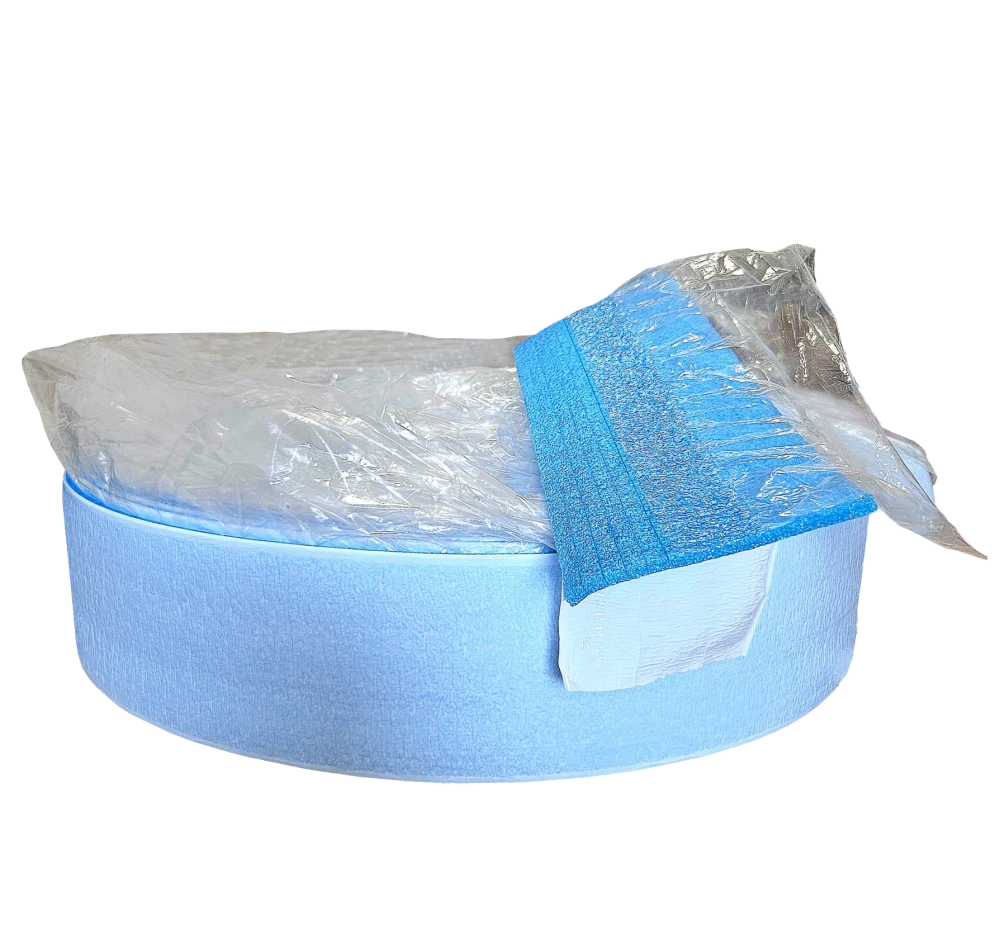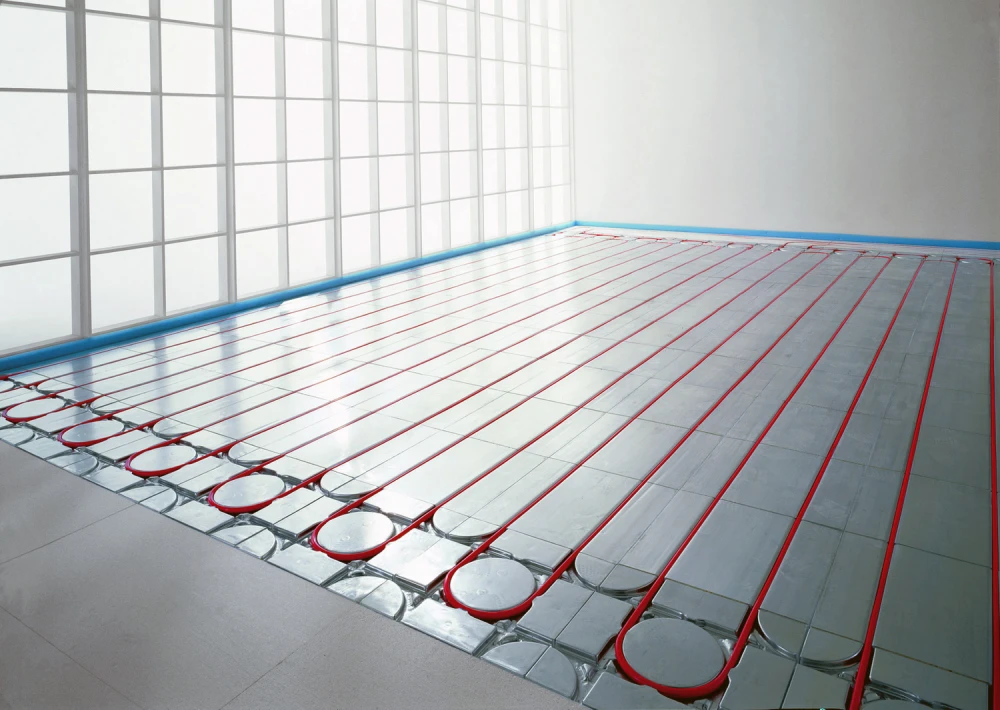
Testing water installations has never been easier. ASSENS test plugs provide a quick and reliable way to seal pipes when sanitary fittings or other accessories are not yet installed – saving time and preventing costly leaks.
Made from durable polypropylene and equipped with EPDM gaskets, these plugs always ensure a secure and efficient seal. Installation is simple – tighten by hand or with a wrench – and the color-coded design (red for hot water, blue for cold water) allows for quick pipe identification.
Available in 1/2" sizes, the plugs are ideal for heating and domestic water systems, offering professionals an efficient and precise solution for leak testing.

A small but essential component in any wet underfloor
heating system is the perimeter edge strip. While often overlooked, this
element plays a critical role in the performance and stability of the floor.
What is a perimeter edge strip?
It’s a flexible insulating strip installed along the base of
interior and exterior walls, between the screed and the wall. Its main role is
to absorb lateral expansion of the screed and prevent heat and sound transfer
to adiacent structures.
Why is it necessary?
- ✅
Allows screed expansion – prevents pressure buildup against walls and
reduces risk of cracks.
- ✅
Minimizes thermal bridges – reduces heat loss through uninsulated wall
areas.
- ✅
Improves acoustic insulation – limits sound transmission through the floor
structure.
- ✅
Protects floor finishes – prevents stress or damage along floor edges over
time.
Where is it installed?
- Along
all walls (interior and exterior), and around columns or vertical elements
- Installed
before screeding, directly above the insulation layer
Conclusion:
The perimeter edge strip is a must-have in any wet underfloor heating system.
It enhances thermal and acoustic efficiency while protecting your flooring
investment long-term.

In a wet underfloor heating system, dilatation profiles are
not just a recommendation – they’re critical for the performance and structural
integrity of the installation.
What are dilatation profiles?
These are separation elements placed in the screed that
allow the floor to expand and contract naturally as temperatures change.
Without them, the screed may crack and deform, potentially damaging the heating
system and the finishes of the floor.
Why are they so important?
- ✅
Prevent screed cracking – thermal expansion creates internal stresses; dilatation
profiles absorb and relieve them.
- ✅
Protect heating pipes – structural movement can stress or damage the
embedded pipes.
- ✅
Ensure even system performance – no deformation, no heat loss, no risk to
efficiency.
- ✅
Divide large areas – essential for rooms over 8 m long or 40 m² in total
surface.
Where and how are they installed?
- At
door thresholds or room transitions
- Every
8 linear meters in large open spaces
- Installed before screeding, directly over insulation and between heating pipe circuits
Conclusion:
Dilatation profiles are a key detail in wet underfloor heating systems. They
protect your investment by ensuring durability, efficiency, and safe operation
over time.

Dry underfloor heating systems come in various forms, but
not all deliver the same level of performance, durability, or ease of
installation. Here’s what to consider when selecting the right system for your
project.
1. Panel Material
- Wood:
heavy, expensive, and absorbs moisture.
- Gypsum:
heavy and fragile – cracks of the panels can lead to lose the whole board.
- ASSENS
EPS400 Polystyrene: is the smart choice because the panels are
ultra-lightweight, moisture-resistant, and feature aluminum foil that
blocks oxygen, UV rays and humidity.
2. Preformed Channels vs. Flat Panels
- Flat
panels require special tools to carve channels, increasing labor and time.
- ASSENS
EPS400 panels come with pre-cut straight and rounded channels, so only one
panel is needed for full system installation.
3. Thermal Efficiency
The aluminum foil layer acts as a radiator, distributing
heat evenly across the floor surface by absorbing and radiating warmth from the
heating pipes.
4. Channel Design
Basic panels often require separate return panels for pipe
turns. In contrast, ASSENS EPS400 panels include built-in turning channels,
simplifying installation and logistic—no need for multiple panel types.
5. Panel Density
- EPS200:
lower density, requires a load-distribution membrane, adding cost and
complexity.
- EPS400:
high-density, no membrane needed, saving both time and money.
6. Compatibility with Floor Finishes
EPS400 panels can be used with screed, parquet, tiles, or
marble. Adhesives or leveling compounds can be applied underneath or on top as
needed—just ensure your top layer is compatible with underfloor heating.
Conclusion:
For a reliable, efficient, and easy-to-install dry system, ASSENS EPS400 panels
offer the best solution: one panel, multiple advantages, no compromises.

Testing water installations has never been easier. ASSENS test plugs provide a quick and reliable way to seal pipes when sanitary fittings or other accessories are not yet installed – saving time and preventing costly leaks.
Made from durable polypropylene and equipped with EPDM gaskets, these plugs always ensure a secure and efficient seal. Installation is simple – tighten by hand or with a wrench – and the color-coded design (red for hot water, blue for cold water) allows for quick pipe identification.
Available in 1/2" sizes, the plugs are ideal for heating and domestic water systems, offering professionals an efficient and precise solution for leak testing.

A small but essential component in any wet underfloor
heating system is the perimeter edge strip. While often overlooked, this
element plays a critical role in the performance and stability of the floor.
What is a perimeter edge strip?
It’s a flexible insulating strip installed along the base of
interior and exterior walls, between the screed and the wall. Its main role is
to absorb lateral expansion of the screed and prevent heat and sound transfer
to adiacent structures.
Why is it necessary?
- ✅
Allows screed expansion – prevents pressure buildup against walls and
reduces risk of cracks.
- ✅
Minimizes thermal bridges – reduces heat loss through uninsulated wall
areas.
- ✅
Improves acoustic insulation – limits sound transmission through the floor
structure.
- ✅
Protects floor finishes – prevents stress or damage along floor edges over
time.
Where is it installed?
- Along
all walls (interior and exterior), and around columns or vertical elements
- Installed
before screeding, directly above the insulation layer
Conclusion:
The perimeter edge strip is a must-have in any wet underfloor heating system.
It enhances thermal and acoustic efficiency while protecting your flooring
investment long-term.

In a wet underfloor heating system, dilatation profiles are
not just a recommendation – they’re critical for the performance and structural
integrity of the installation.
What are dilatation profiles?
These are separation elements placed in the screed that
allow the floor to expand and contract naturally as temperatures change.
Without them, the screed may crack and deform, potentially damaging the heating
system and the finishes of the floor.
Why are they so important?
- ✅
Prevent screed cracking – thermal expansion creates internal stresses; dilatation
profiles absorb and relieve them.
- ✅
Protect heating pipes – structural movement can stress or damage the
embedded pipes.
- ✅
Ensure even system performance – no deformation, no heat loss, no risk to
efficiency.
- ✅
Divide large areas – essential for rooms over 8 m long or 40 m² in total
surface.
Where and how are they installed?
- At
door thresholds or room transitions
- Every
8 linear meters in large open spaces
- Installed before screeding, directly over insulation and between heating pipe circuits
Conclusion:
Dilatation profiles are a key detail in wet underfloor heating systems. They
protect your investment by ensuring durability, efficiency, and safe operation
over time.









